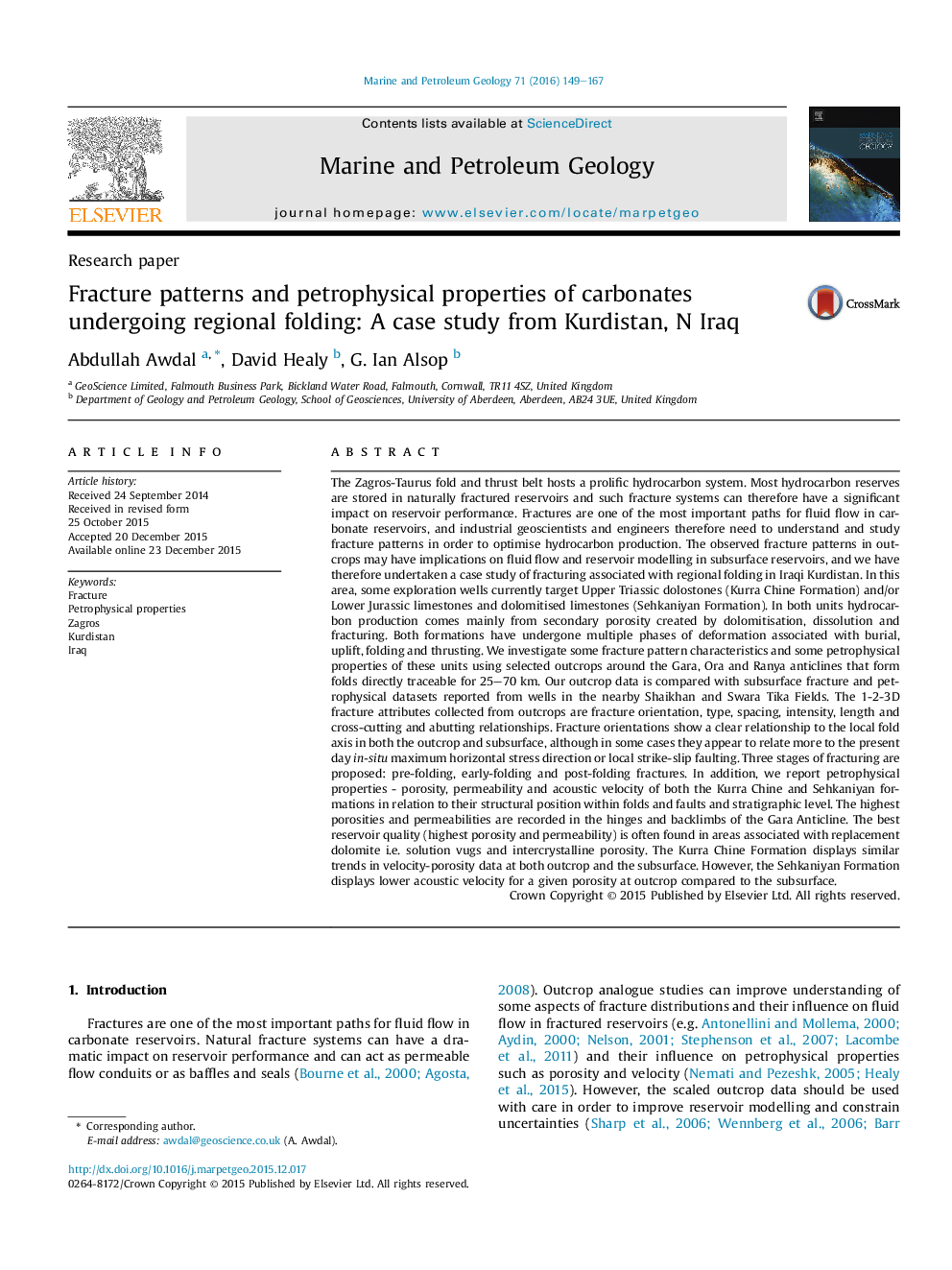| کد مقاله | کد نشریه | سال انتشار | مقاله انگلیسی | نسخه تمام متن |
|---|---|---|---|---|
| 4695421 | 1637156 | 2016 | 19 صفحه PDF | دانلود رایگان |
• Fractures may show relationships to local folding, faulting and in-situ stress.
• Fracture intensity may be influenced by lithology and bed thickness.
• Petrophysical properties are influenced by lithology, position on folds and faults.
The Zagros-Taurus fold and thrust belt hosts a prolific hydrocarbon system. Most hydrocarbon reserves are stored in naturally fractured reservoirs and such fracture systems can therefore have a significant impact on reservoir performance. Fractures are one of the most important paths for fluid flow in carbonate reservoirs, and industrial geoscientists and engineers therefore need to understand and study fracture patterns in order to optimise hydrocarbon production. The observed fracture patterns in outcrops may have implications on fluid flow and reservoir modelling in subsurface reservoirs, and we have therefore undertaken a case study of fracturing associated with regional folding in Iraqi Kurdistan. In this area, some exploration wells currently target Upper Triassic dolostones (Kurra Chine Formation) and/or Lower Jurassic limestones and dolomitised limestones (Sehkaniyan Formation). In both units hydrocarbon production comes mainly from secondary porosity created by dolomitisation, dissolution and fracturing. Both formations have undergone multiple phases of deformation associated with burial, uplift, folding and thrusting. We investigate some fracture pattern characteristics and some petrophysical properties of these units using selected outcrops around the Gara, Ora and Ranya anticlines that form folds directly traceable for 25–70 km. Our outcrop data is compared with subsurface fracture and petrophysical datasets reported from wells in the nearby Shaikhan and Swara Tika Fields. The 1-2-3D fracture attributes collected from outcrops are fracture orientation, type, spacing, intensity, length and cross-cutting and abutting relationships. Fracture orientations show a clear relationship to the local fold axis in both the outcrop and subsurface, although in some cases they appear to relate more to the present day in-situ maximum horizontal stress direction or local strike-slip faulting. Three stages of fracturing are proposed: pre-folding, early-folding and post-folding fractures. In addition, we report petrophysical properties - porosity, permeability and acoustic velocity of both the Kurra Chine and Sehkaniyan formations in relation to their structural position within folds and faults and stratigraphic level. The highest porosities and permeabilities are recorded in the hinges and backlimbs of the Gara Anticline. The best reservoir quality (highest porosity and permeability) is often found in areas associated with replacement dolomite i.e. solution vugs and intercrystalline porosity. The Kurra Chine Formation displays similar trends in velocity-porosity data at both outcrop and the subsurface. However, the Sehkaniyan Formation displays lower acoustic velocity for a given porosity at outcrop compared to the subsurface.
Figure optionsDownload as PowerPoint slide
Journal: Marine and Petroleum Geology - Volume 71, March 2016, Pages 149–167
